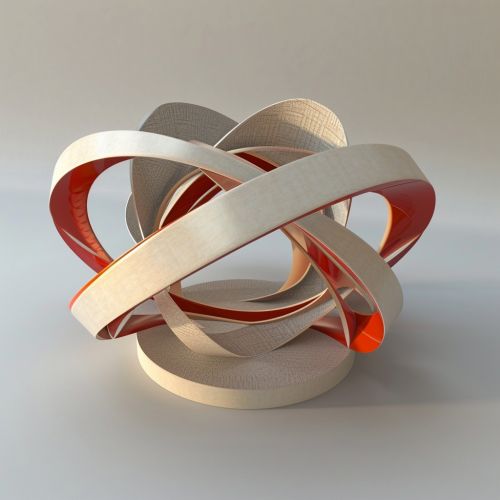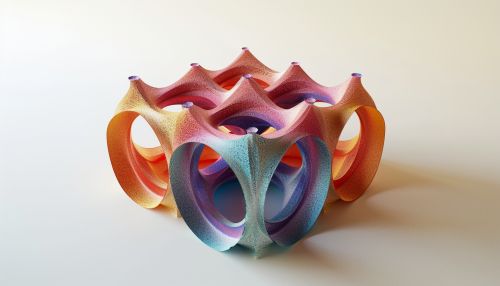Cayley surface
Introduction
The Cayley surface or Cayley's nodal cubic surface, named after Arthur Cayley, is a projective algebraic surface in three-dimensional projective space. It is one of the earliest examples of a surface with singularities, and its study has led to significant developments in algebraic geometry.
Definition
The Cayley surface can be defined as the zero locus of a homogeneous polynomial of degree four in four variables, known as the Cayley quartic. This polynomial is given by the determinant of a 3x3 symmetric matrix with linear entries. The surface is a cubic surface, meaning that it has degree three, and it is also a rational surface, implying that it is birationally equivalent to the projective plane.
Properties
The Cayley surface has several remarkable properties. It is a singular surface, with four singular points, which are nodes or double points. These singular points correspond to the four 2x2 minors of the 3x3 matrix defining the surface. The surface is also self-dual, in the sense that it can be obtained from itself by a projective duality transformation.
Singularities
The singularities of the Cayley surface are of particular interest. They are isolated points where the surface is not smooth, and they correspond to degenerate conics. Near each singularity, the surface looks like a cone over a nodal curve. The study of these singularities has led to important insights into the local structure of algebraic varieties.
Geometry
From a geometric point of view, the Cayley surface can be seen as a blow-up of the projective plane at six points. This means that it is obtained by replacing six points in the plane by six lines, known as exceptional divisors. The surface also has 27 lines, which correspond to the 27 lines on a general cubic surface. These lines intersect in a configuration known as the Schläfli double six, which is a key feature of the geometry of cubic surfaces.
Topology
In terms of topology, the Cayley surface is a real four-manifold, and its singular points give rise to interesting topological features. For example, the link of each singularity is a trefoil knot, which is the simplest non-trivial knot. The surface also has a natural complex structure, making it a complex surface, and it is a K3 surface, a special class of surfaces with rich topological and geometric properties.
Applications
The Cayley surface has found applications in various areas of mathematics and physics. In algebraic geometry, it has been used to study the structure of singularities and the birational geometry of surfaces. In theoretical physics, it has appeared in the study of string theory and quantum field theory, where it provides a simple example of a Calabi-Yau manifold, a type of space that plays a key role in these theories.


